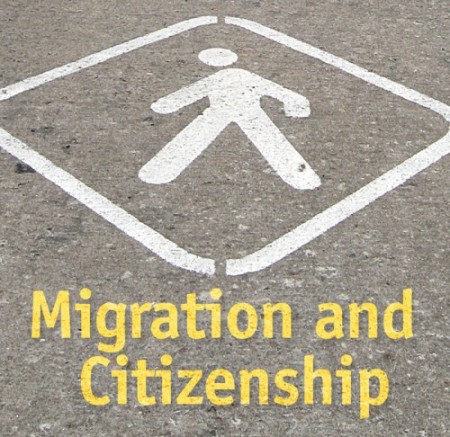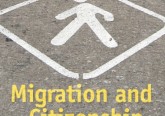 “Hang on they are not tourists”, a UK citizen said to his wife with wide eyes and an expression on his face suggesting this realisation was a big surprise. “They could even be ‘migrants’…couldn’t they?”
“Hang on they are not tourists”, a UK citizen said to his wife with wide eyes and an expression on his face suggesting this realisation was a big surprise. “They could even be ‘migrants’…couldn’t they?”
This is a question — in this case one I heard in an interview — that has always been complex, but is becoming even more so, in the UK and elsewhere. Time has changed legal and regulatory circumstances, and the demographic of people who come to Britain have also changed.
These changes have generated new migrant categories, typologies and tiers but also new stigmas, phobias and labels.
Who is a migrant? Alas, there is no clear legal or administrative definition of ‘migrant’. A 1953 United Nations recommendation referred to the definition of “permanent immigrants” as non-residents (both nationals and aliens) arriving with the intention to remain for a period exceeding a year and of “permanent emigrants” as residents (nationals and aliens) intending to remain abroad for a period exceeding one year (United Nations, 1953).
At the national level, definitions were introduced with the main purpose of keeping records of stocks and flows of international migrants. Like many other countries, UK law does not contain a definition of the term ‘migrant’. It does, however, make a distinction between persons who have the ‘right of abode’ (British citizens including a small minority of Commonwealth citizens) and those who do not have this right (for more details see Anderson and Blinder, 2014).
Does this matter? Yes. We should consider the definition of the term ‘migrant’ is constructed by political and public discourse. It is part of a labelling process which takes place on an everyday basis. It is a heuristic short-cut to make sense of the world that surrounds us, helping to form opinions and decision-making process.
The labelling journey
The content of this process has changed over the years, making “the migrant” a floating label. Indeed, labelling processes can be traced back through centuries of migration history at a local and regional level.
Let’s use the Commonwealth era of migration to the UK as a quick example. The most common label used – very comfortably – during this period was race. Not from ‘Albion’ = migrant. But from the 1970s through the 1980s and 1990s, the term race and race relations somewhat disappeared. Another term took its place: asylum and asylum seeker became the new dominant label (see Vollmer 2014). This label had, however, an intrinsic problem. It floated into waters of normativity; it was diluted by a moral dimension which became increasingly dominant. Bogus behaviour and deception by asylum seeker became predominant in the common understanding of ‘the migrant’.
Why labels matter
Does the general suspicion towards everybody that might try to deceive Britain, thus engaging in an immoral act towards the host society, still fit with the term ‘migrant’? Does it colour the label to this day? We have no answer to this but it seems that today’s label of ‘the migrant’ has increasingly become a label of ethics and morality: ‘who is the right migrant’ or ‘who is the good migrant’?
During fieldwork for my current research project funded by the Leverhulme Trust[i], I have encountered narratives that capture such general suspicion and ambiguity of morale and trust. In one sentence a person explained how migrants are poisonous for the neighbourhood, the community and the British society, and in the next sentence the person’s Polish neighbour was described as a “nice man” who is not “one of them”. So who is the “them” that cannot be trusted and that could possibly be “a drain on the British society” (BBC, 2014). And one can also ask, who is the “us”? Maybe it is just the current label that is attached to ‘the migrant’ that is suffering under the gloomiest siege of EU-UK relations and a migration debate that has reached, at times, new toxic levels. These circumstances make questions of ‘who is the right migrant’ or ‘who is the good migrant’ somewhat confusing if not unfeasible.
The machineries of the political parties in the UK have begun to spin for the upcoming general election and we wait to see where the label might float next. In the end, however, as the above empirical example has shown, there isn’t, and there cannot be, a clear-cut distinction between citizens and migrants (see Isin 2002). Simple binaries of inside and outside, or ‘the self’ and ‘the other’ do not exist. This is difficult to accept but it is necessary to acknowledge.
This post is part of Migration and Citizenship, our series hosted in collaboration with Oxford COMPAS.
References
Anderson, B. and Blinder, S. (2014) “Who Counts as a Migrants? Definitions and their Consequences.” Migration Observatory Briefing, COMPAS, University of Oxford, UK.
BBC (2014), Nick and Margaret: “Too Many Immigrants in the UK”, BBC 1, broadcasted 16th July 2014.
United Nations (1953) International Migration Statistics. Statistical Papers, No. 20. No. E.53.XIII.10
Isin, E.F. (2002), Being Political. Genealogies of Citizenship. Minneapolis, MN: University of Minnesota Press.
Vollmer, B. (2014) Policy Discourses on Irregular Migration in Germany and the United Kingdom. Basingstoke: Palgrave Macmillan.
[i] Border security: Discourses and Practices in the UK, see also: http://www.compas.ox.ac.uk/research/dynamics/border-security-discourses-and-practices-in-the-uk/






1 Comment